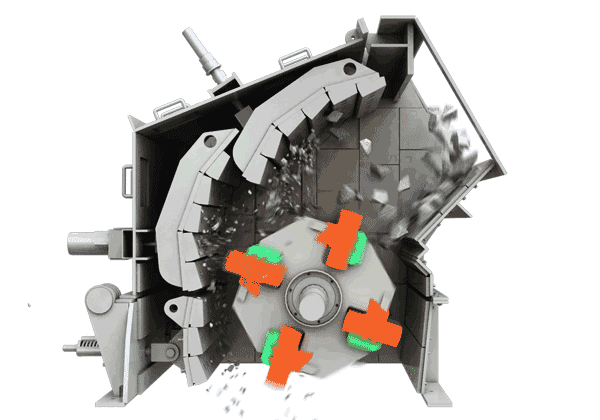
An impact crusher is a machine that reduces the size of the material by impact rather than pressure. Depending on the processing stage, impact crushers are designated as primary, secondary, tertiary or quaternary rotor crushers.
Applicable materials:rock quarries, sand and gravel, mining, construction and demolition recycling, construction aggregates, road and railway construction, metallurgy, water conservancy, and chemical industry.
Introduction
A horizontal impact crusher is a machine that reduces the size of the material by impact rather than pressure. Depending on the processing stage, impact crushers are designated as primary, secondary, tertiary, or quaternary rotor crushers.
Impact crushers are named for the method by which they reduce larger pieces of rock to smaller particle sizes. As the name implies, impact crushers accelerate the feed to high speeds and then throw the fast-moving rocks against the walls of the crushing chamber and each other. This collision, impact, breaks the stones into smaller sizes.
Horizontal impact crushers (also called impactors or horizontal shaft impactors) can be used in primary, secondary, or tertiary applications. They use the inertia of a rotating shaft mounted on a rotor to break the material, resulting in a high crushing ratio. Impactors are often used as a cost-effective alternative to jaw and cone combination equipment because they provide good levels of crushing and product formation in many applications.
Working principle

The working principle of the horizontal impact crusher is that the hammers collide with the object quickly, causing the object to break into small pieces. The crusher consists of a high-speed rotor rotating around a horizontal axis, on which hammers or plate hammers are mounted. The material is fed into the crusher chamber through the feed chute and meets the rotating hammers or plate hammers.
Performance characteristics
1. High Reduction Ratios: Impact crushers achieve high reduction ratios, meaning they are effective at breaking large pieces of material into smaller pieces quickly.
2 . Versatility: They can handle a wide range of materials, including softer rocks, concrete, asphalt, and even some harder materials.
3. Uniform Product Shape: The impact force produces a more uniform and cubic product shape than other types of crushers, which can be very beneficial for specific applications.
4 . Low Operating Costs: Impact crushers generally have lower energy costs and maintenance requirements than other types of crushers, such as jaw or cone crushers.
5. Easy Maintenance: Many impact crushers are designed with easy access to components, making maintenance and parts replacement simpler.
6 . Adjustable Output: The size of the output material can usually be adjusted by changing the speed of the rotor or the distance between the impact plate and the feed.
7. Reduced Parts Wear: Because the material is broken down by impact rather than compression, there may be less wear on the crushing components, extending their service life.
Technical Parameters
| Model | Feed size(mm) | Max.feeding(mm) | Capacity(t/h) | Power(kw) | Weight(t) | Dimensions(mm) |
| PF0607 | 320x770 | ≤100 | 10-20 | 30 | 4.5 | 1500*1450*1500 |
| PF0810 | 400 x 980 | ≤250 | 20-60 | 45 | 9.5 | 1975*1890*1645 |
| PF1010 | 400 x 1080 | ≤300 | 50-90 | 55 | 12.8 | 2330*2010*2560 |
| PF1210 | 450 x 1060 | ≤300 | 60-130 | 90 | 14 | 2640*2010*2850 |
| PF1214 | 450 x 1440 | ≤300 | 100-200 | 132 | 19 | 2640*2400*2850 |
| PF1315 | 550 x 1530 | ≤350 | 130-280 | 160 | 24 | 2930*2670*3150 |
Note: Technical data are subject to change without prior notice.

Contact: Hebe Wang
Phone: +86 15092894665
Tel: +86 15092894665
Email: info@sandmancrusher.com
Add: No.23 Yihe Road,Linyi City, Shandong Province, China
We chat
